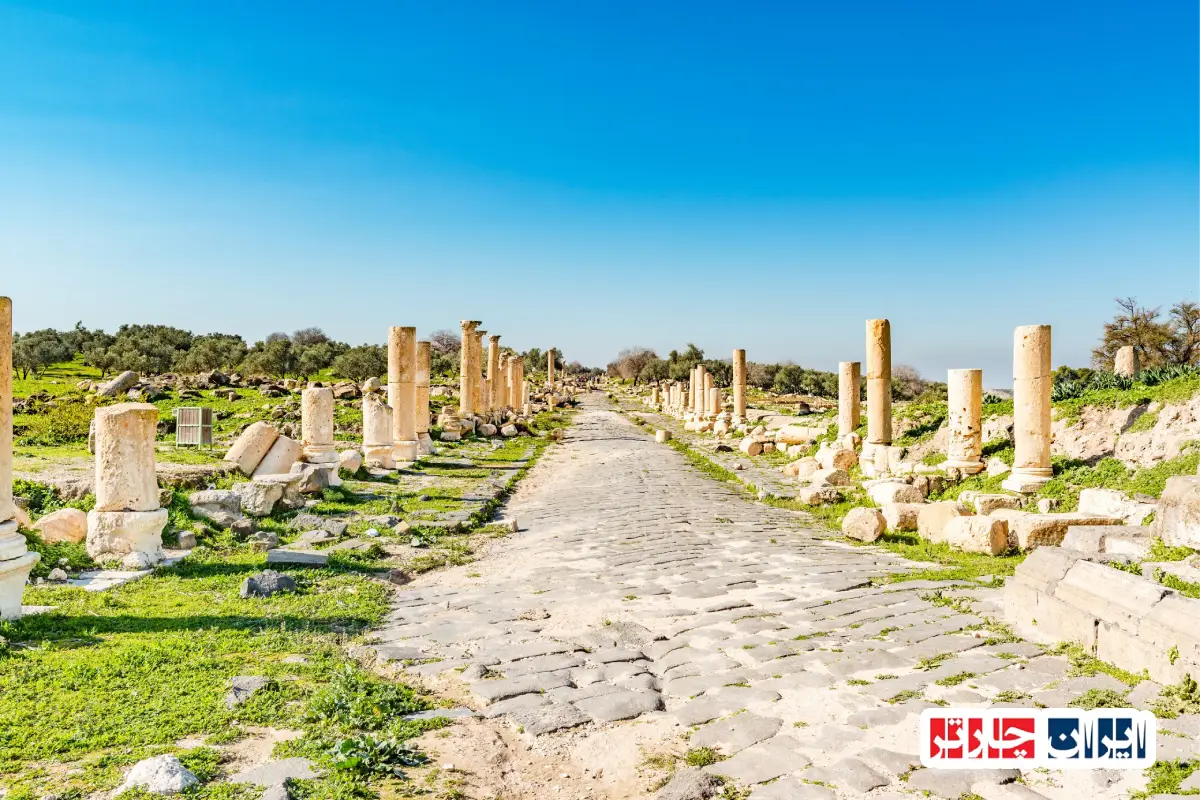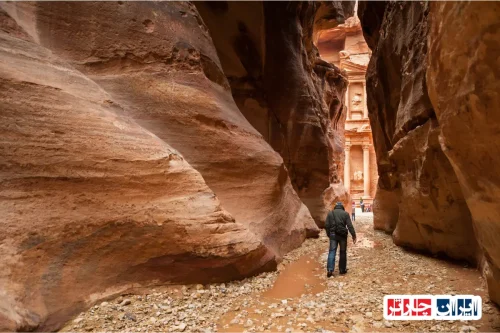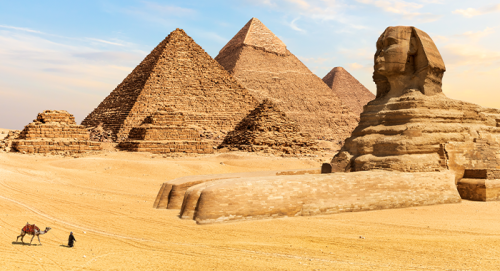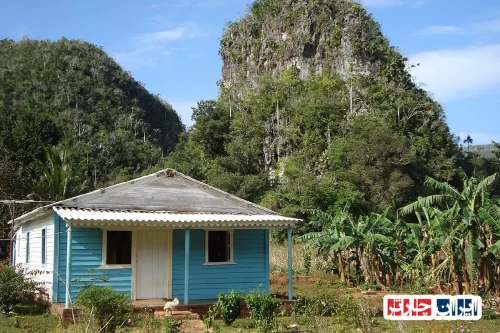Discover the Rich Heritage and Natural Beauty of Umm Qais in Irbid Governorate, Jordan
Umm Qais, located in the heart of Irbid Governorate, Jordan, is a captivating destination renowned for its rich history, stunning archaeological sites, and breathtaking natural landscapes. This ancient city, with its strategic position overlooking the Sea of Galilee and the Golan Heights, offers visitors a unique blend of cultural heritage and scenic views. Exploring Umm Qais provides an immersive experience into the diverse civilizations that have inhabited this region over millennia, from the Greco-Roman era to modern times. The archaeological remains, including well-preserved ruins of theaters, basilicas, and baths, narrate stories of bygone eras and highlight the city’s importance as a hub of trade and culture. Visitors can also enjoy the lush green hills, panoramic vistas, and tranquil atmosphere that make Umm Qais a perfect escape for history enthusiasts and nature lovers alike. Whether you’re interested in exploring ancient ruins, hiking scenic trails, or simply soaking in the spectacular vistas, Umm Qais in Irbid Governorate, Jordan, promises an unforgettable journey into the past and present of this remarkable region. For more information and to plan your visit, learn about the Umm Qais-Iran Charter and discover how to make the most of your trip to this historic and natural wonder.
Discover the Rich History of Umm Qais in Irbid Governorate Jordan
Umm Qais, located in the heart of Irbid Governorate, Jordan, boasts a history that spans thousands of years. This ancient city has served as a vital cultural and strategic hub since antiquity, witnessing the rise and fall of numerous civilizations. Archaeological excavations reveal remnants from the Hellenistic, Roman, Byzantine, and Islamic periods, illustrating its significance throughout history. Visitors can explore ancient ruins, including theaters, temples, and city walls, that tell stories of a bygone era. The city’s strategic position atop a hill offers panoramic views of the Sea of Galilee and surrounding landscapes, making it a must-visit for history enthusiasts. The continuous habitation and preservation efforts highlight Umm Qais’s importance as a cultural treasure in Jordan. Its historical layers provide a unique insight into the region’s development over millennia. Understanding Umm Qais’s past enriches visitors’ appreciation of Jordan’s diverse heritage and enduring legacy.
Ancient and Medieval Attractions of Umm Qais in Irbid Governorate Jordan
Umm Qais is renowned for its remarkable archaeological sites that span multiple historical periods. The city was a prominent center during the Hellenistic era, with well-preserved ruins like the Roman theater and baths showcasing classical architecture. The remnants of ancient temples and city walls reflect its religious and civic importance in antiquity. During the Byzantine period, Christian churches and mosaics were added, illustrating the region’s religious diversity. The medieval period left behind fortress remains and defensive structures that highlight its strategic military role. These diverse archaeological layers make Umm Qais a living museum, offering insights into the evolution of urban planning and architecture. Visitors can walk through ancient streets, marvel at intricate mosaics, and imagine life in a thriving ancient city. Preservation projects continue to uncover new artifacts, enriching the understanding of the city’s rich past. Exploring these sites provides a comprehensive view of Jordan’s historical depth and cultural complexity.
Natural Beauty and Scenic Views in Umm Qais, Irbid Governorate Jordan
Beyond its historical sites, Umm Qais offers breathtaking natural scenery that captivates visitors. The city’s elevated position provides stunning vistas of the Sea of Galilee, the Golan Heights, and the Jordan Valley. The surrounding landscape features lush green hills, terraced fields, and rugged cliffs, perfect for nature lovers and photographers. Walking trails and viewpoints allow visitors to immerse themselves in the region’s tranquility while enjoying panoramic views. The area’s diverse flora and fauna create a vibrant ecosystem, ideal for eco-tourism and outdoor activities. During spring, the landscape blooms with colorful wildflowers, enhancing the area’s natural charm. The cool breezes and scenic vistas make Umm Qais a perfect escape from urban life. Visitors can also explore nearby natural reserves and parks that preserve the region’s ecological heritage. The combination of history and nature makes Umm Qais a unique destination for holistic travel experiences.
The Strategic Military Significance of Umm Qais in Jordan’s History
Umm Qais’s geographical location has historically made it a vital military stronghold. Situated atop a strategic hill, it offers commanding views of key routes and neighboring territories. Throughout various eras, the city served as a defensive outpost protecting Jordan’s borders and controlling trade routes. Roman and Byzantine fortifications attest to its military importance, with remnants of walls and watchtowers still visible today. Its role in regional conflicts, including during the Islamic period, underscores its significance in maintaining security and territorial integrity. The city’s natural defenses, combined with man-made fortifications, made it a formidable military site. Its strategic position also facilitated control over the surrounding fertile lands and trade pathways. Today, these historical military structures attract visitors interested in Jordan’s defense history. The enduring legacy of Umm Qais’s strategic importance highlights its role in shaping regional stability over centuries.
Architectural Heritage: From Ancient Temples to Religious Structures in Umm Qais
Umm Qais showcases a diverse architectural heritage that reflects its multi-layered history. The city is home to ancient temples dedicated to Greco-Roman gods, with some ruins still visible on the site. The Roman theater, a masterpiece of engineering, features impressive stonework and acoustics, serving as a cultural venue in antiquity. Christian basilicas and Byzantine mosaics reveal the religious diversity that once thrived here. Islamic-era structures, including mosques and fortifications, add to the architectural mosaic of the city. The blend of styles demonstrates the region’s cultural exchanges and religious evolution over time. Restoration projects aim to preserve these architectural gems for future generations. Walking through Umm Qais’s ruins offers a glimpse into the craftsmanship and artistic sensibilities of past civilizations. Each structure narrates a chapter of Jordan’s rich cultural tapestry, making it a vital site for heritage preservation and tourism.
Best Times to Visit Umm Qais in Irbid Governorate Jordan
The ideal time to explore Umm Qais is during spring (March to May) and autumn (September to November), when the weather is mild and pleasant. During these seasons, the landscape is lush and vibrant, perfect for sightseeing and outdoor activities. Summer months can be hot, but early mornings and late afternoons offer cooler temperatures for exploring archaeological sites and enjoying panoramic views. Winter visits are also possible, with cooler temperatures and fewer tourists, providing a peaceful experience. Special cultural festivals and events often take place during spring and fall, enriching the travel experience. Planning your trip around these optimal seasons ensures comfortable weather and the opportunity to witness natural beauty and cultural activities. Always check local weather forecasts and event calendars to maximize your visit. Proper planning guarantees a memorable and enjoyable journey to this historic and scenic region.
Cultural Experiences and Local Traditions in Umm Qais
Umm Qais offers a rich tapestry of cultural experiences rooted in its diverse history. Visitors can engage with local artisans showcasing traditional crafts such as pottery, weaving, and embroidery. Markets and bazaars provide opportunities to purchase handmade souvenirs that reflect regional artistry. Participating in local festivals and celebrations reveals vibrant music, dance, and culinary traditions passed down through generations. The warm hospitality of residents enhances the cultural immersion, making visitors feel like part of the community. Traditional Jordanian cuisine, including dishes like mansaf and mezze, can be enjoyed at local eateries. Cultural centers and museums in the area further educate visitors about the region’s heritage. These authentic experiences foster a deeper understanding of Umm Qais’s identity and its role in Jordanian culture. Exploring local traditions enriches the travel journey, creating lasting memories and connections.
Conservation and Future Development of Umm Qais in Jordan
Efforts to preserve and enhance Umm Qais’s archaeological and natural heritage are ongoing. Conservation projects focus on stabilizing ancient structures, restoring mosaics, and protecting the landscape from environmental threats. Collaboration between government agencies, local communities, and international organizations ensures sustainable development. Future plans include developing eco-tourism facilities, visitor centers, and educational programs to promote awareness and responsible tourism. These initiatives aim to balance preservation with accessibility, allowing more visitors to experience the site without compromising its integrity. Investment in infrastructure, signage, and guided tours enhances the visitor experience. Community involvement is encouraged to foster local pride and economic benefits. The continuous focus on conservation and development ensures that Umm Qais remains a vital cultural and natural landmark for generations to come, contributing to Jordan’s tourism growth and cultural diplomacy.
Nearby Attractions and Excursions from Umm Qais in Jordan
Umm Qais is a gateway to several other notable sites in northern Jordan. A short drive can take visitors to the historic city of Irbid, known for its vibrant markets and universities. The Yarmouk River offers opportunities for outdoor activities like hiking and picnicking. The nearby Golan Heights provide stunning viewpoints and historical landmarks. The Jordan Valley, with its fertile lands and natural reserves, complements the scenic beauty of Umm Qais. Visitors can also explore the ancient city of Gadara, just a few kilometers away, which shares similar archaeological significance. These excursions enrich the travel experience by offering diverse cultural, historical, and natural attractions. Planning combined visits allows travelers to maximize their time and gain a comprehensive understanding of the region’s heritage. Each nearby destination adds a unique layer to the journey, making northern Jordan a compelling area for exploration.

Frequently Asked Questions about Umm Qais in Irbid Governorate, Jordan
- What is the historical significance of Umm Qais?
- Umm Qais holds a vital place in history due to its strategic location and diverse archaeological layers. It has been inhabited since ancient times, serving as a cultural and military hub through Hellenistic, Roman, Byzantine, and Islamic periods. The city’s ruins, including theaters, temples, and city walls, tell stories of its importance in regional history and its role in various civilizations’ development.
- What are the main archaeological attractions in Umm Qais?
- Key sites include the well-preserved Roman theater, ancient baths, temples dedicated to Greco-Roman gods, Byzantine mosaics, and medieval fortress remains. These structures showcase a blend of architectural styles and reflect the city’s religious and civic significance across different eras.
- What natural features make Umm Qais a scenic destination?
- Umm Qais offers breathtaking panoramic views of the Sea of Galilee, the Golan Heights, and the Jordan Valley. Its elevated position provides lush green landscapes, rugged cliffs, and scenic walking trails, making it ideal for nature lovers and photographers alike.
- Why was Umm Qais considered a strategic military site?
- Its commanding hilltop location allowed control over key trade routes and neighboring territories. Historical fortifications and watchtowers highlight its role as a defensive outpost, protecting regional borders and facilitating military operations during various periods.
- What architectural styles are visible in Umm Qais?
- The city features a mix of Greco-Roman temples, Roman theaters, Byzantine churches with mosaics, and Islamic-era structures like mosques and fortifications. This diversity reflects its long history of cultural and religious exchanges.
- When is the best time to visit Umm Qais?
- The optimal seasons are spring (March to May) and autumn (September to November), when the weather is mild and the landscape is vibrant. Early mornings and late afternoons are ideal for sightseeing and enjoying the scenic views.
- What cultural experiences can visitors enjoy in Umm Qais?
- Visitors can explore local markets, watch traditional crafts like pottery and weaving, participate in festivals, and taste authentic Jordanian cuisine such as mansaf and mezze. Engaging with local artisans and residents enriches the cultural journey.
- How is Umm Qais being preserved and developed for future visitors?
- Conservation efforts focus on stabilizing ruins, restoring mosaics, and protecting natural landscapes. Plans include developing eco-tourism facilities, visitor centers, and educational programs to promote sustainable tourism while maintaining the site’s integrity.
- What nearby attractions can be combined with a visit to Umm Qais?
- Nearby sites include the city of Irbid with its markets and universities, natural reserves along the Yarmouk River, the Golan Heights for viewpoints and historical landmarks, and the ancient city of Gadara, all offering diverse cultural and natural experiences.
- Are there outdoor activities available around Umm Qais?
- Yes, visitors can enjoy hiking, picnicking, and birdwatching in the surrounding natural reserves. The scenic landscapes and trails provide a peaceful environment for outdoor recreation.
- What role did Umm Qais play during the Islamic period?
- During Islamic rule, the city continued to serve as a strategic military and administrative center. Islamic structures like mosques and fortifications were built, and the city remained an important regional hub for trade and defense.
- What are the main preservation challenges facing Umm Qais?
- Environmental factors such as erosion, weathering, and vegetation growth threaten the ruins. Human activity and tourism also pose risks, necessitating ongoing conservation and management efforts to protect the site for future generations.
- How does Umm Qais contribute to Jordan’s tourism industry?
- As a rich archaeological and scenic destination, Umm Qais attracts history enthusiasts, nature lovers, and cultural travelers. Its well-preserved ruins and stunning views make it a key site that promotes sustainable tourism and cultural heritage awareness in Jordan.
- What is the significance of Umm Qais in Jordanian cultural identity?
- Umm Qais embodies Jordan’s diverse historical layers and cultural heritage. Its archaeological sites and natural beauty symbolize the country’s rich past and ongoing efforts to preserve its identity through heritage tourism and cultural pride.






















